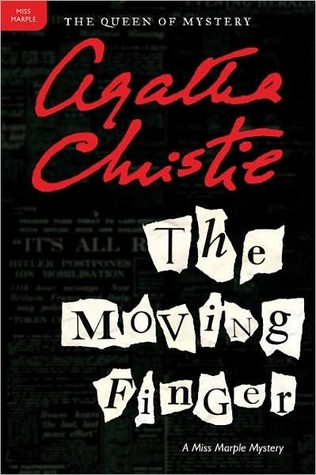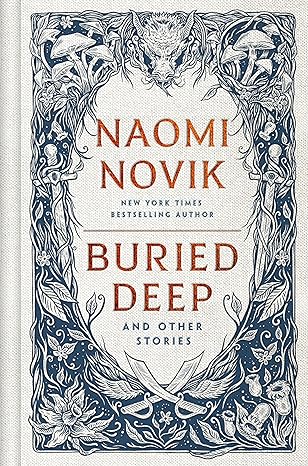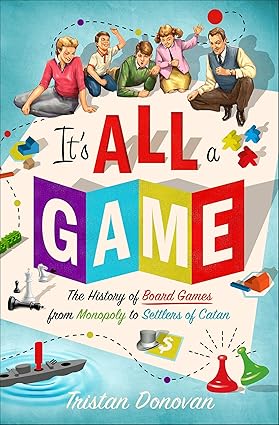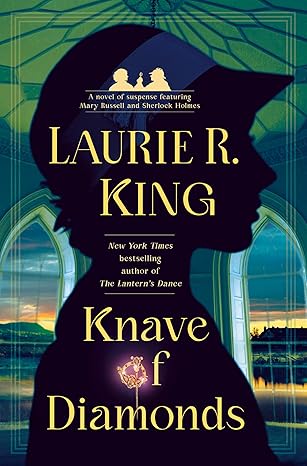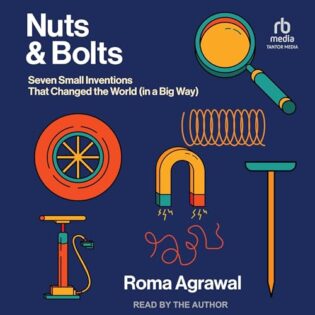 Nuts and Bolts: Seven Small Inventions That Changed the World in a Big Way by Roma Agrawal
Nuts and Bolts: Seven Small Inventions That Changed the World in a Big Way by Roma Agrawal Narrator: Roma Agrawal
Published by Tantor Media on 11/07/2023
Genres: Nonfiction, Science
Format: Audiobook
Source: purchased
Purchase: Amazon | Bookshop | Barnes & Noble | Audible | Chirp
Add to Goodreads

A structural engineer examines the seven most basic building blocks of engineering that have shaped the modern world.
Some of engineering’s mightiest achievements are small in scale, even hidden—and yet, without them, the complex machinery on which our modern world runs would not exist. In Nuts and Bolts, Roma Agrawal examines seven of these extraordinary elements: the nail, the wheel, the spring, the lens, the magnet, the string, and the pump.
From the physics behind both Roman nails and modern skyscrapers to rudimentary springs that inspired lithium batteries, Agrawal shows us how even the most sophisticated items are built on the foundations of these ancient and fundamental breakthroughs in engineering. Agrawal explores an array of intricate technologies—dishwashers, spacesuits, microscopes, suspension bridges, breast pumps—making surprising connections, explaining how they work, and using her own hand-drawn illustrations to clarify complex technical principles. Along the way, she recounts the stories of remarkable scientists and engineers from all over the world, and reveals how engineering has fundamentally changed the way we live.
Seven small but mighty inventions
In Nuts and Bolts: Seven Small Inventions That Changed the World in a Big Way, engineer Roma Agrawal argues that the humble nail, wheel, spring, magnet, pump, lens, and string are fundamental engineering inventions upon which most of our modern technology depends. I found it fascinating to explore with her the various applications of these inventions throughout history and see how widely they are used today — often in unexpected ways.
For instance, most of us imagine that the wheel was invented for transportation, but in fact its first use was probably horizontal, to turn pottery vessels such as bowls and jars. Only later was the wheel turned on its side and paired with another to propel a cart. Agrawal then leads readers through the history of the spoked wheel, thence to the wire wheel familiar from bicycles, and onward to other developments. She concludes the section on wheels with a more recent application: the gyros used to control the attitude of the International Space Station.
The whole book is like this: physics, engineering, and history combined to tell a series of stories about human civilization and its technology. From intricately crafted watches to spacesuits, sprung carriages to concert halls, suspension bridges to skyscrapers, telephone communication, telescopes, ship’s chronometers, in vitro fertilization, and even breast pumps, Agrawal shows how just about everything in our modern world can be traced back to one or more of these seven basic inventions.
I listened to the audiobook, which is read by Ms. Agrawal with skill as well as an evident love for her subject. I do think I would have benefited from seeing the illustrations in the book (hand drawn by the author), but even without them, I learned an enormous amount, and thoroughly enjoyed the journey.
Challenges: Audiobook Challenge 2024
Reading this book contributed to these challenges:
- Audiobook Challenge 2024





















